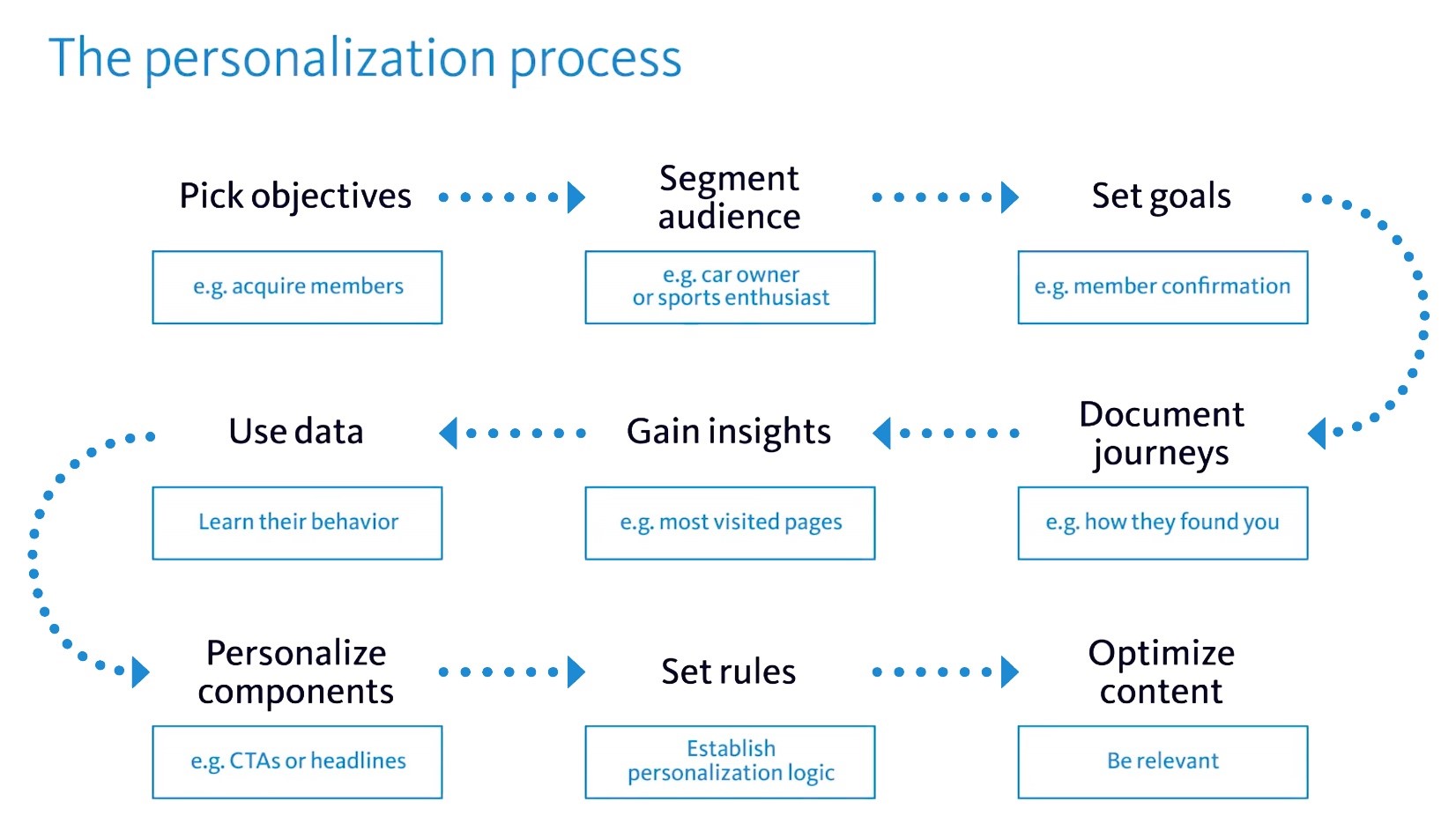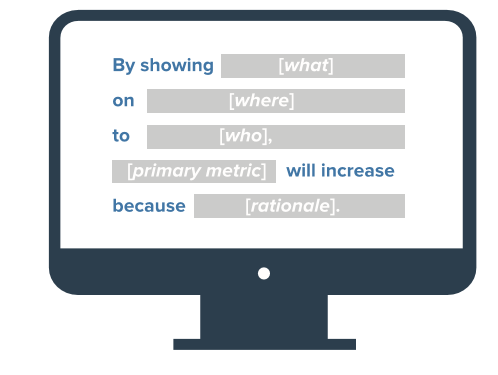Personalization can have a huge impact on customer experience, making it a priority for many emarketers.
The first step towards providing an exceptional experience on your website is to know your audience. Your website visitors are coming in contact with you from every channel and expect a consistent, cohesive experience. From event interactions to mobile apps, social media and the web, you want to give them personalized experiences that flow together and are contextually relevant.

So what is Personalization?
Personalization is showing (or hiding) targeted content to specific segments of your visitors.
Personalization comes in two flavors:
Implicit (behavior based) – browsing through your website, clicking on specific links, time of day, etc.
Explicit (known data based) – known data through form submissions, campaign information, completing a purchase, logging into an account
The personalization process is shown in the diagram below.

Planning personalization involves thinking about what your audience needs. Think about where your content will be showing, who will see it, and what you are trying to achieve. The above process was outlined in a recent Sitecore video, ‘How to build a better brand experience with personalization’, by Lars Birkholm Petersen, Sitecore VP of Business Optimization.
Personalization can help brands build a better experience. At the end of the day, it is a “Crawl, Walk, Run” approach that leads organizations to make changes to the user experience to benefit their customers and increase conversions. Marketers also learn to understand the best ways to use personalization for maximizing and managing this improvement.
Planning personalization involves thinking about what your audience needs. Think about where your content will be showing, who will see it, and what you are trying to achieve.

Image from Optimizely, ‘How to Run Your First Personalization Campaign’
If you are thinking about implementing personalization on your website, your next steps should include:
Building a 360° view of your audience. You will need to understand the data available and connect the silos.
Personalization strategies come next, and come in many forms. Create a strategy for what your audiences will benefit from most, and prioritize efforts by level of effort and impact.
